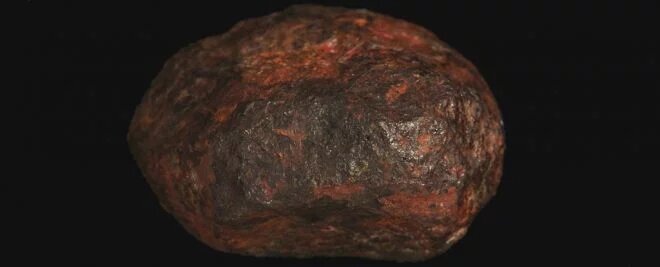Scientists found a new mineral in a meteorite that crashed to Earth in 1951. It took almost seven decades of analysis to fin
d the formation, which is just one of 500,000 to 600,000 minerals in the small stone, about 210 grams.
The extraterrestrial composition was named edscottite, named after the cosmopolitan Edward Scott of the University of Hawaii. The discovery, however, was made in California. It is a type of iron carbide with five iron atoms and two carbon atoms never before registered in nature. On Earth, formation can be obtained artificially from the smelting of iron.
The meteorite containing the extraterrestrial mineral fell in the Wedderburn region, alongside the road of the remote Australian city that for many years hosted a gold rush. The place, which gave its name to the rock, still attracts miners, but in much smaller numbers today.
“Scientists have discovered a new mineral, one never before seen in nature, lodged inside a meteorite found near Wedderburn in central Victoria.
Edscottite! https://t.co/j8tt9xqRDn
— Belinda Barnet (@manjusrii) August 31, 2019
The article that formalized edscottite was published by Caltech Chi Ma mineralogist in August this year and was recognized by the International Mineralogy Association. The original black and red stone is currently only about one-third – 71 grams – of its original size, so much so that it has been cut by scholars to analyze its composition. It currently belongs to the Australian museum entity Museums Victoria.
“We found 500,000 to 600,000 minerals in the lab, but less than 6,000 are produced by nature,” said the company’s geoscience curator Start Mills, who is not linked to the Caltech study.
From part of a planet to Wedderburn

urn meteorite before the cuts (Photo: Museums Victoria)
Planetary scientist Geoffrey Bonning of Australian National University, who was also not involved in the study, believes the meteorite formed in the hot, pressurized nucleus of an ancient planet from the early Solar System. It is believed that this planet may have been involved in a collision with another planet, or a moon, or even an asteroid.
This would have shattered the edscottite-forming planet, and its fragments scattered throughout space, according to Bonning’s theory. Some of them possibly mingled with the Asteroid Belt located between Mars and Jupiter. Millions of years later, the 210-gram rock may have collided with another object and took the course that led to Wedderburn.
Source: The Age
